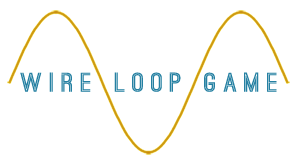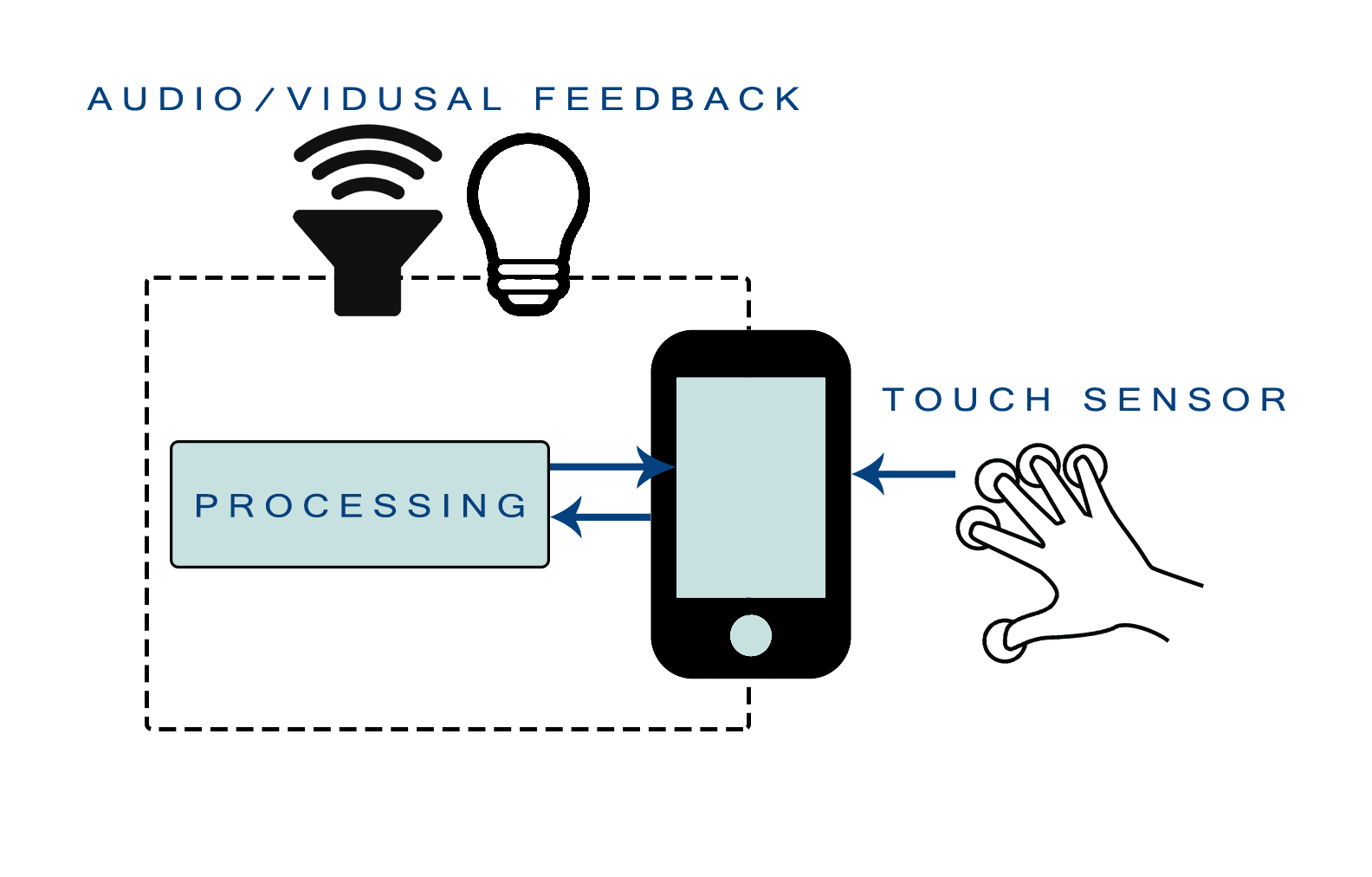| Description | User as a patient starts running the application |
| Normal Scenario |
|
| Alternative Scenario |
|
| Error Scenario | N/A |


Paralysis is one of the common physical disadvantage studied by stroke researchers today. While there are many machines and gadgets in place that help with the rehabilitation of the movements of post-stroke patients, the emphasis seems to always be placed in having the patients attend a physical therapy session or purchase an expensive device that contributes to their recovery.
Wire Loop is a tablet game application developed for the main purpose of improving the hand-eye coordination of post-stroke patients. As users play the game, they are motivated to move their hand in different positions, movements and speeds through the completion of various difficulty levels, contributing to the development of their hand rehabilitation. This game application has the potential to improve a patient’s hand’s accuracy and agility.

He wants to be able to hammer a nail in again while holding the nail with his weaker hand’s fingers. His ultimate goal is to build a cupboard for his six-year-old grandchild in the near future.
He has never really been too keen about using technology and is resistant to the idea. He thinks using old techniques for rehabilitation may be more effective. Playing games that are not board games or cards is foreign to him. He doesn’t own any technology at home other than his telephone.
He has been going to rehabilitation since his stroke and has had very slow and little improvement. He doesn’t mind asking for help when he needs it, however being independent was his identity before the stroke. He lives with his daughter’s family and gets bored at home at times - he would like some entertainment from time to time.
She wants to get back to her pre-stroke self as soon as she can so she can get back to her work. She has teenager children who need her support at home as well. She uses the computer constantly at work but is now having trouble typing emails she needs to tend to as soon as possible.
Anne loves technology. She is quite advanced in her knowledge of the latest gadgets and makes sure she engages her children with her love for technology.
The stoke was a huge surprise for Anne and her family. With her being in this new situation, she wants to recover as soon as she can and is motivated to do anything, even play games for her rehabilitation. She is a little discouraged since it’s been four months since her stroke and hasn’t seen much improvement, however she is still motivated as ever to improve the situation. She lives with her husband and children who help her with simple tasks such as buttoning her shirts and zipping her coat. Even though getting back to work is her ultimate goal, she would like to be more independent in her everyday tasks.


She wants to restart cooking however, other than that, doesn’t really have much motivation. She thinks she has had a great life so far and would like to not use up resources. She doesn’t have much family and has no one to take care of her, so her motivation to resume her previous functionality is quite low.
She never had a great interest in technology but isn’t resistant from the idea. The most technology she has ever used is her computer at home to simply browse the internet. She does love children games, especially those that give rewards and is open to playing on devices she has never been exposed to before.
Ruth’s stroke was only a week ago and she is in full swing for recovery. However, with her low motivation, the progress is going slower than expected. She has the potential to fully recover fairly quickly and has been experiencing improvement already. She has no support other than her own low motivation to get back and resume her cooking hobby. She would like to be able to complete simple tasks such as sorting peas and peeling the skin off carrots.
| Description | User as a patient starts running the application |
| Normal Scenario |
|
| Alternative Scenario |
|
| Error Scenario | N/A |
| Description | After initiating the application, user as a patient selects the game type. The game type is different by the number of fingers he or she will train with. |
| Normal Scenario |
|
| Alternative Scenario | N/A |
| Error Scenario | N/A |
| Description | User as a patient begins the game of selected type by placing his or her fingers on the starting points |
| Normal Scenario |
|
| Alternative Scenario | N/A |
| Error Scenario |
|
| Description | User as a patient follows the finger path and reaches to the ending point of the path within given time |
| Normal Scenario |
|
| Alternative Scenario | N/A |
| Error Scenario 1 |
|
| Error Scenario 2 |
|
| Description | User as a patient adjusts the given time of the current game stage |
| Normal Scenario |
|
| Alternative Scenario |
|
| Error Scenario |
|
| Description | User as a patient selects level of the game or complexity of the finger path |
| Normal Scenario |
|
| Alternative Scenario |
|
| Error Scenario | N/A |
| Description | User as a patient quits from the current game and goes back to main menu |
| Normal Scenario |
|
| Alternative Scenario | N/A |
| Error Scenario | N/A |
| Description | User as a patient quits from the application |
| Normal Scenario |
|
| Alternative Scenario | User presses the home button of a tablet device |
| Error Scenario | N/A |
| Description | User as a patient adjusts the width of the finger path |
| Normal Scenario |
|
| Alternative Scenario |
|
| Error Scenario |
|
Hand rehabilitation device for people who suffer from motor disorder after stroke is not specific but in wide range. The purpose of this device is different from device to device and it depends on the seriousness of patient’s disorder. Moreover, the method of rehabilitation is different.
The Hand Mentor from Kinetic Muscles Inc. is a hand rehabilitation device in which a patient can train his or her hand movement by playing the built-in games in this device. This device is targeting mainly the rehabilitation of arm and hand. As a patient participate in the game with assistive robotic device around his or her arm, the patient controls a game character by using the arm and hand in the device. Different types of game encourages a patient to move the arm and hand in different movement. Moreover, if the patient faces the difficulty, then the robotic device helps to move the arm and hand. Such goal-oriented device using games highly motivates a patient to train his or hand in more intensive manner.
Costs about $10,000
Produced by Tyromotion, the AMADEO is another hand rehabilitation device in which a patient can train his or her hand, especially fingers, either passively or actively. This device is targeting mainly the rehabilitation of fingers. A patient with very limited movement in his or her fingers, the finger muscles can be treated passively by performing the automated movement sequences. It improves motor and neurological function of fingers and hand. On the other hand, a patient can actively participate in rehabilitation by moving the fingers without any assistance of the device. The device can measure the force and movement of fingers, so it enables the progress tracking.
BaroMedical clinic developed a device in which electrical currents activate the muscle contractions and nerve conduction. The purpose of this device is to enable functional movement of limb by stimulating the nerve of patient who lost the control of the muscle and, moreover, to elicit the voluntary movement of limb. The application of this electrical stimulation device on arm and hand allows a patient to open the clenched hand voluntarily. Repetitive electrical stimulation therapy for long time allows more voluntary movement with less assistance.
Through the research on the currently possible solution for patient with motor disorder, specifically in hand, we have found several factors:
By doing the research on currently available hand rehab product, we have realized that there is not much of rehab product with game feature. There are some goal-oriented products, like HandMentor, but they are significantly expensive and large in size, so they are mostly available only in clinics or hospital. Also, those rehab devices with game feature mainly focus on training bigger muscles, like arm and wrist, but not the smaller muscles, like finger, where it requires the delicacy of control.
Therefore, our product focuses on low-cost, portability, game feature, and training delicate movement of finger muscles.
Considering all, our proposed solution is a game application on the tablet device that focuses on the patient who needs to train the finger. Firstly, since it is application development, development cost would be significantly low and the low-cost rehab game application is possible. Also, the game application in today’s prevalent tablet device is greatly portable and allows more patients to involve in the rehab activity. Next, as mentioned above, we decided to develop game as rehab method rather than simple repetitive exercise so that the patient would be more motivated to participate and concentrate on the rehab activity. Moreover, different level of game with different complexity of this game application forces the patients to actively use their hand and fingers with various poses in different movement, so the patients can train their finger in more delicate way.

Figure 1, High-Level design of Wire Loop
The abstracted high level approach follows the following procedure:
With the availability of iPad of Apple company, all three teammates will develop the iOS game application in objective-C of XCode or in Javascript. Although we do not have experience in the application development, everyone has been exposed to coding in C and Java, so everyone will be comfortable in using objective-C or Javascript in couple of weeks, and also we will receive some help from open source codes.
Once all the team members get used to the language, the first phase of our project will be the development of a game interface. Majorly, we will make quite an effort to find optimal design of main gaming feature, like the position of the finger path, width of the finger path, and position and size of starting point and ending point of the finger path, where the patients will train their fingers. After that, the non-functional requirement features, like setting buttons, will be considered. In this step, the team will try to optimize the size and position of buttons, such as main menu button, given time controlling button, etc. to ensure those non-functional requirement feature does not obstruct the patient’s rehab activity. For this phase, the low fidelity prototype will be necessary to find the optimal and user-friendly design of game interface design.
Next, our team will focus on developing the human-computer interaction features. This phase, certainly, will be the most demanding part of the project, so the extra efforts from each team member are expected and all of us will try to receive help from the open sources. The order of steps would be ‘multi-finger touch recognition feature’ that the application recognizes the patient’s finger touching the touchscreen, ‘path boundary sensitive feature’ that will indicate the failure of the game when the patient touches the boundary of finger path, ‘game time feature’ that will give patient the given time of the game, and ‘auditory and visual feedback feature’. Once the all theses essential game interacting features are implemented, the usability testing with a volunteer will be very crucial in improving our product.
Thus, this will be iterative process to develop our product far better.
Very lastly, we will finalize our product development by implementing the main page design, and creating different game types (game types are different by the number of the fingers the patient wants to train with, as mentioned above) and different level of game (different complexity of the finger path). This phase is expected to be simple and short.
* If the time is allowed, our team will work on the one more feature, ‘adjusting width of finger path’, that allows an user to adjust the width of the finger path so that our product can give more rehab activity feature for the patient to train with.
| Mohamed | Radhika | Chan Woo | |
|---|---|---|---|
| Project Idea Generation | 3 | 1 | 1 |
| Web Notebook Design | 6 | - | - |
| Introduction | - | 0.5 | - |
| Personas | - | 4 | - |
| Use Case Scenarios | - | - | 5 |
| Related Products | - | - | 2 |
| Product Comparision | - | - | 1 |
| High Level Design | 1 | - | - |
| Feasibility Justification | - | - | 1 |
| Total | 10 | 5.5 | 10 |